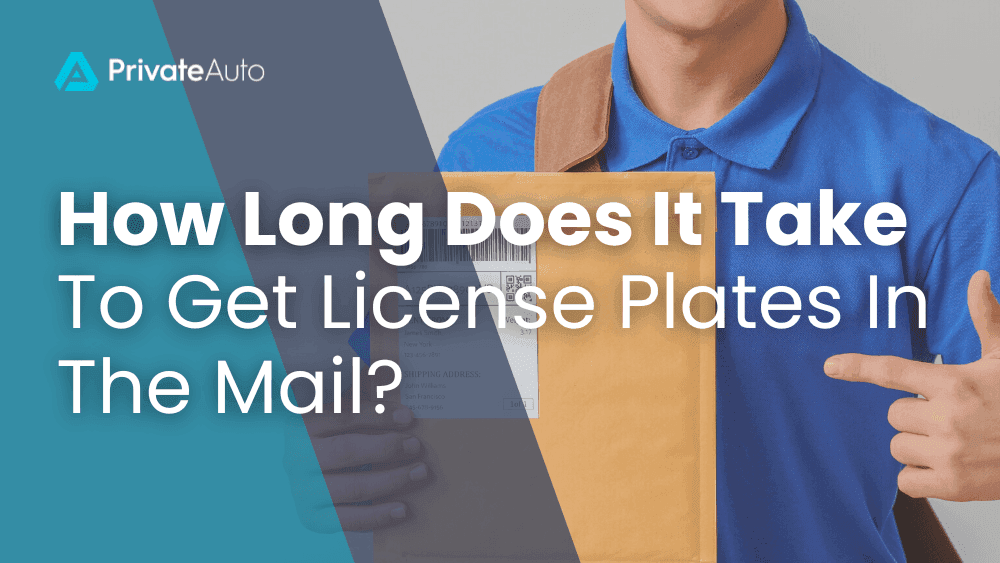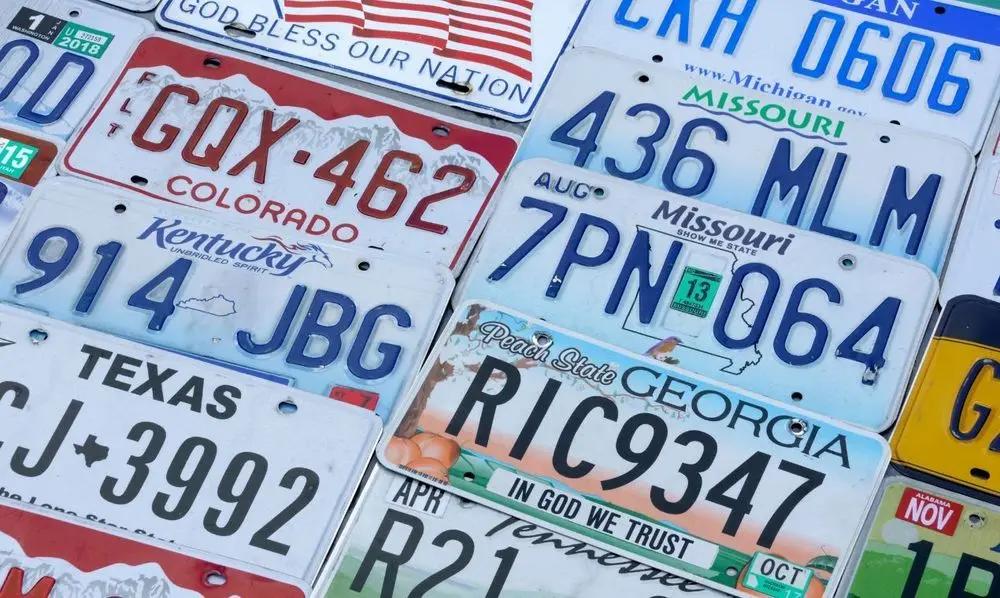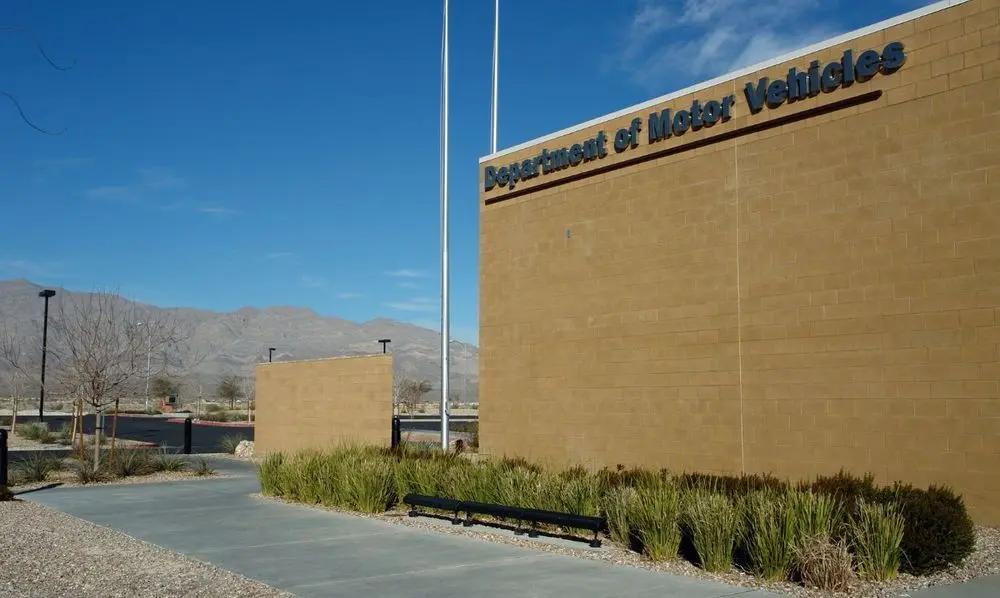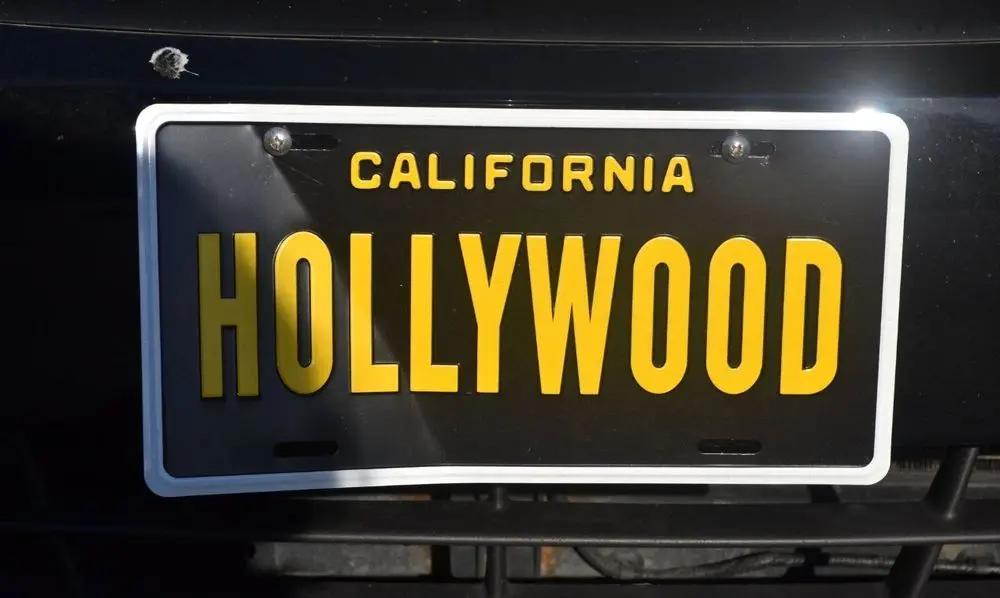How Long Does It Take To Get License Plates In The Mail?
It can take up to four weeks to receive your license plates in the mail. If you need your plates sooner, you can visit a DMV office and get them processed in person. Keep in mind that there may be a fee for this service.

The exact time to get your license plates in your mail varies from state to state. There are also a few things that can delay the process. What factors contribute to the length of time to receive your license plate in your mail? Let's take a closer look.
What Are The Requirements To Get a License Plate?
The process of getting new license plates varies from state to state, so be sure to research the requirements for your specific state. You’ll get new plates from your state’s Department of Motor Vehicles (DMV) or equivalent organization.

Most DMVs allow you to order plates online via their website.
Register Your Vehicle
To get a license plate, you must first register your vehicle with your state’s Department of Motor Vehicles (DMV). You’ll need to provide info such as the following:
Additionally, you must provide evidence that you are the rightful owner of the vehicle and you are trying to register by presenting either a copy of the vehicle title or your bill of sale.
•
Personal ID card or driver's license
•
Proof of car insurance
•
Odometer reading
Additionally, you must provide evidence that you are the rightful owner of the vehicle and you are trying to register by presenting either a copy of the vehicle title or your bill of sale.
Order License Plates
When applying for new license plates, there are three different ways that you can order:
1. Order license plates in person at your local DMV office
2. Order license plates online
3. Order license plates via mail
Whether you apply online, in person, or by mail, you need to fill out an application form that includes your personal information, address, title and registration number.
Once you have submitted the form, you will be asked to pay a fee. License plates cost different amounts in different states. The fee also varies depending on the type of license plate you choose. For example, in California, a standard license plate costs $23, while a personalized license plate costs $50.
If you choose to order online or in person, you can pay with a credit card, debit card, or electronic check. If you mail in your application, you must enclose a check or money order made out to the local DMV office, or in some states to the Secretary of State or Department of Revenue.
After all the paperwork has been provided to the DMV, they will issue some type of confirmation or receipt which proves the vehicle was successfully registered, and a license plate will be issued with it.
1. Order license plates in person at your local DMV office
2. Order license plates online
3. Order license plates via mail
Whether you apply online, in person, or by mail, you need to fill out an application form that includes your personal information, address, title and registration number.
Once you have submitted the form, you will be asked to pay a fee. License plates cost different amounts in different states. The fee also varies depending on the type of license plate you choose. For example, in California, a standard license plate costs $23, while a personalized license plate costs $50.
If you choose to order online or in person, you can pay with a credit card, debit card, or electronic check. If you mail in your application, you must enclose a check or money order made out to the local DMV office, or in some states to the Secretary of State or Department of Revenue.
After all the paperwork has been provided to the DMV, they will issue some type of confirmation or receipt which proves the vehicle was successfully registered, and a license plate will be issued with it.
DMV Registration and License Plate Fees
The cost of registering a vehicle, obtaining a car title, and getting license plates can vary widely from state to state. In some states, the fees are fixed, while in others they are based on the age and weight of the vehicle or the manufacturer's suggested retail price (MSRP).
There are 45 states with fixed registration and plate fees. Vehicle registration in these 45 states ranges from $8 to $225. The cost for a title in these states ranges from $3 to $100.
There are five states with variable costs: Colorado, Iowa, Michigan, New Hampshire, and Utah.
There are 45 states with fixed registration and plate fees. Vehicle registration in these 45 states ranges from $8 to $225. The cost for a title in these states ranges from $3 to $100.
There are five states with variable costs: Colorado, Iowa, Michigan, New Hampshire, and Utah.

When you transfer ownership of a vehicle, you will pay a charge that varies by state. In most states, you will also pay sales taxes on a vehicle purchase.
If requesting a personalized or specialty plate, be prepared to pay more. Your state’s DMV may also offer discounts for certain types of vehicle license plates, such as for electric vehicles or hybrid vehicles.
For more information on how much license plates cost in your state, you should contact your state’s DMV office.
If requesting a personalized or specialty plate, be prepared to pay more. Your state’s DMV may also offer discounts for certain types of vehicle license plates, such as for electric vehicles or hybrid vehicles.
For more information on how much license plates cost in your state, you should contact your state’s DMV office.
How Long Does It Take To Get a License Plate For a New Car?
Standard license plates normally arrive in 2 to 4 weeks. Personalized plates may take longer; feel free to contact your state’s DMV for expected delivery time.
The amount of time it typically takes to receive a set of license plates for a new car from the Department of Motor Vehicles can vary state by state and even county by county. Filling out the paperwork and gathering any necessary documents before visiting your local DMV can make the process much faster, with most straightforward application processes taking only an hour or two.
Online applications are usually the fastest way to go since processing typically takes no more than two weeks. On the other hand, if you choose to mail your registration form for license plates, there is usually a waiting period of four weeks before the plates arrive.
However, in certain situations, such as when requesting specialized license plates, extra processing time may be necessary before they can be manufactured and mailed out.
The amount of time it typically takes to receive a set of license plates for a new car from the Department of Motor Vehicles can vary state by state and even county by county. Filling out the paperwork and gathering any necessary documents before visiting your local DMV can make the process much faster, with most straightforward application processes taking only an hour or two.
Online applications are usually the fastest way to go since processing typically takes no more than two weeks. On the other hand, if you choose to mail your registration form for license plates, there is usually a waiting period of four weeks before the plates arrive.
However, in certain situations, such as when requesting specialized license plates, extra processing time may be necessary before they can be manufactured and mailed out.
How Long Does It Take To Get Replacement License Plates In The Mail?
If your license plate was stolen, damaged, or lost, you’ll need to apply for a replacement plate. Depending on where you live, the average turnaround time on getting your new plates in your mail can run anywhere from two to four weeks.
If your license plates were stolen, the first step is to report the theft of the license plate to the local police department. In many cases, you must verify your address with the vehicle licensing office before you can begin the process of replacing a plate that was lost or stolen.
Most DMV websites provide information about estimated wait times, so check your state’s DMV site. You may also want to apply for temporary plates that allow you to drive while you wait for your replacement to arrive.
When ordering replacement plates by mail be sure to include the following information with your request:
If you don’t want to wait for your replacement plates to arrive in the mail, you can opt to pick them up in-person instead. Usually, you can pick up your new plates as soon as you submit your application and pay the fee.
For custom or specialized plates, you may have no option but to wait for them to be mailed to you.
If your license plates were stolen, the first step is to report the theft of the license plate to the local police department. In many cases, you must verify your address with the vehicle licensing office before you can begin the process of replacing a plate that was lost or stolen.
Most DMV websites provide information about estimated wait times, so check your state’s DMV site. You may also want to apply for temporary plates that allow you to drive while you wait for your replacement to arrive.
When ordering replacement plates by mail be sure to include the following information with your request:
•
The license plate number of the vehicle for which you wish to order replacement plates.
•
The name under which the vehicle is registered.
•
Your complete mailing address, including your apartment number if you have one.
•
A daytime phone number where we can reach you in case we have questions about your order.
•
The type of plates you wish to order (standard or personalized). Please note that there is a fee for personalized license plates.
•
The fee for the replacement license plates. Fees may be paid by check or money order made out to the Commissioner of Motor Vehicles.
If you don’t want to wait for your replacement plates to arrive in the mail, you can opt to pick them up in-person instead. Usually, you can pick up your new plates as soon as you submit your application and pay the fee.
For custom or specialized plates, you may have no option but to wait for them to be mailed to you.
How Long Does It Take To Get Custom Plates?
Depending on the state, the wait time to get custom plates might range from six to twelve weeks.

Custom license plates are a great way to express your unique personality on the road. You can order special license plates to recognize service, achievements, licenses, status, historical significance, occupations, etc.
Categories include:
Special interest plates can be about supporting the arts, environmental causes, or various charities. You can order special interest plates in sequential (standard numbering) or personalized (custom numbers and letters) styles.
Before you order any type of custom plates check to see if the customization you want is available or permitted.
Categories include:
•
Special license plates: exempt, livery, historical vehicles, HAM radio, military and veteran
•
Occupational license plates: dealers, dismantlers
•
Special Recognition license plates: Legion of Valor, Purple Heart, Gold Star Family, etc.
•
Apportioned license plates: power unit and prorate
•
Legislative license plates: senate, assembly
Special interest plates can be about supporting the arts, environmental causes, or various charities. You can order special interest plates in sequential (standard numbering) or personalized (custom numbers and letters) styles.
Before you order any type of custom plates check to see if the customization you want is available or permitted.
How To Track Your License Plate Order Mailing Status?
Keeping track of your license plate mailing status can be a challenge, but there are a few simple steps you can take to ensure that you don't miss any important updates.
To start, contact your state Department of Motor Vehicles (or equivalent organization in your state) and inquire about the expected timeline for delivery.
Additionally, utilize tracking services from the courier company that is responsible for delivering the plate. These services will provide real-time updates on the movement of your package and where it is currently located in transit.
Get an order confirmation number from your local DMV. This reference number will allow you to check the status online.
To start, contact your state Department of Motor Vehicles (or equivalent organization in your state) and inquire about the expected timeline for delivery.
Additionally, utilize tracking services from the courier company that is responsible for delivering the plate. These services will provide real-time updates on the movement of your package and where it is currently located in transit.
Get an order confirmation number from your local DMV. This reference number will allow you to check the status online.
Online Plate Mailing Status Lookup
To keep on top of the mail-in services you have with the DMV, it's important to be aware of tracking how your license plate order is being mailed out. Fortunately, there are online tools available to make this process much easier, so you can easily stay informed.
Many DMV websites offer an online license plate mailing status lookup service. If you ordered your plates online you can use the Plate Mailing Status Lookup to check the status of your order. All you need to do is enter your vehicle's license plate number and state of residence and you'll be able to find out almost immediately if your request has been received, processed, and shipped.
Many DMV websites offer an online license plate mailing status lookup service. If you ordered your plates online you can use the Plate Mailing Status Lookup to check the status of your order. All you need to do is enter your vehicle's license plate number and state of residence and you'll be able to find out almost immediately if your request has been received, processed, and shipped.
DMV Mail-In Services
DMV Mail-In Services provide a convenient way to handle DMV-related activities without having to go into a physical location. This service allows customers to complete various transactions related to driver’s licenses, ID cards, vehicle registrations, vehicle titles, and much more.
If you applied for new vehicle plates and registration by mail-in service at a local DMV office, you can use DMV mail-in services to track the status of your license plate order.
If you applied for new vehicle plates and registration by mail-in service at a local DMV office, you can use DMV mail-in services to track the status of your license plate order.
Buy Or Sell a Car Online With PrivateAuto
PrivateAuto is the best place to buy and sell cars online.
Our technology-driven, self-service solution makes it easy and safe to communicate, e-sign state documents, and send or receive payments instantly and securely. You can also schedule a test drive and negotiate the price without ever giving out your personal contact information.
Interested in buying a used car? Browse used vehicles for sale!
Our technology-driven, self-service solution makes it easy and safe to communicate, e-sign state documents, and send or receive payments instantly and securely. You can also schedule a test drive and negotiate the price without ever giving out your personal contact information.
Interested in buying a used car? Browse used vehicles for sale!
Steps for Selling Your Vehicle through PrivateAuto
PrivateAuto makes selling your used vehicle easy. The sales process consists of a few simple steps:
Gather necessary documentation
You’ll need your vehicle title and other paperwork discussed above. Have it handy, so you’re not scrambling to find it at the moment of completing a sale.
Register on PrivateAuto and get verified
To make PrivateAuto a safe place for everyone, we require email, phone, and driver’s license verification, including facial recognition. Get started here.
List your car
Easily create your PrivateAuto listing with our step-by-step guide. Bonus: we include a window brochure with a QR code scannable to your listing.
Set your terms
It’s your car, so you drive the deal! You can control where, when, and who you meet. Decide whether to accept only ID-verified buyers, or buyers with verified funds. Don’t waste your time with buyers who aren’t verified to your preference.
Vet incoming offers
Manage offers in one place with the ability to accept, reject, or counter offers within the app. Listing on multiple sites? Filter all communications through PrivateAuto by sharing your listing link on all platforms. Your personal info is protected: no more giving out your phone number or email address. All communication happens in our app.
Choose a buyer
When you find an offer you like, accept it and proceed to the next step with that buyer.
Schedule a test drive
The buyer will want to test drive your car. No more back and forth texts. You never have to give out your phone number. Rather, use our handy scheduling feature to coordinate a time and place for a test drive. (Oh, and you’ll be able to finalize the transaction instantly at the test drive location, FYI.)
E-sign documents
After the buyer is satisfied with your car and the two of you have agreed on a purchase price, you can easily e-sign the bill of sale within our app, from your phone. With our shared documents feature, you can easily locate the vehicle paperwork needed after the sale.
Get paid, instantly
Before PrivateAuto, receiving funds was the most stressful part of the entire selling process, especially for any used car sale over $5,000. There just aren’t a lot of good ways to move large amounts of money quickly and conveniently. Those days are over! Verify and receive funds instantaneously with PrivateAuto Pay, our innovative banking integration. Guaranteed funds for transactions large and small.
Transfer title
When you sell your vehicle, fill out the necessary information on the back of the title transfer document to transfer the title to the buyer.
License plates
In some states, you’ll remove your license plates, while in other states you’ll leave them on and let the buyer take them with the car.
License Plates FAQ
Where are my Arizona license plates?
Any Arizona driver who needs to replace a lost, stolen, or damaged license plate can do so through the state's Motor Vehicle Division.
If the license plate is simply unreadable due to wear and tear, it can be replaced online. You will be able to choose the same numbers and letters for your new plate.
If the plate was lost or stolen, the driver must visit an MVD office or authorized third-party provider. They will issue you a new license plate with new numbers and letters.
The Arizona license plate fee is $25 for standard plates, including the license plate sticker.
If the license plate is simply unreadable due to wear and tear, it can be replaced online. You will be able to choose the same numbers and letters for your new plate.
If the plate was lost or stolen, the driver must visit an MVD office or authorized third-party provider. They will issue you a new license plate with new numbers and letters.
The Arizona license plate fee is $25 for standard plates, including the license plate sticker.
How often should I renew my license plates?
How do I check the status of my Texas license plate?
How long does it take to get license plates in MN?
How long does it take to get personalized plates in NJ?
How long does a license plate take to come in the mail in California?
How long does it take to get license plates from a dealer in California?
How long does it take to get license plates from a dealer in Washington?
How long does it take to get license plates in Utah?
How long does it take to get license plates in NY?
How long does it take to get license plates in Ohio?
Is it legal to make your own license plate?
What do you do with old license plates?
How do you put a license plate on a car?
What is a digital license plate?
How can I cancel my license plates?
What is a passenger license plate?
How to attach a license plate frame?
Further Reading
Are secondhand vehicle prices crashing?
What is a release of liability?
Comparing PrivateAuto and CarGurus
How PrivateAuto Pay is revolutionizing vehicle transactions
What documents are needed to sell my used car privately?
KSL and PrivateAuto: 2 Utah marketplaces contrasted
How can I transfer a car title to a family member?
Bring a Trailer vs PrivateAuto: 2 marketplaces compared
What is a release of liability?
Comparing PrivateAuto and CarGurus
How PrivateAuto Pay is revolutionizing vehicle transactions
What documents are needed to sell my used car privately?
KSL and PrivateAuto: 2 Utah marketplaces contrasted
How can I transfer a car title to a family member?
Bring a Trailer vs PrivateAuto: 2 marketplaces compared

Andy Lewis
Contributing Author
Andy Lewis is the Chief Technology Officer (CTO) at PrivateAuto, bringing over 30 years of expertise in the technology field to the forefront of the online marketplace....

